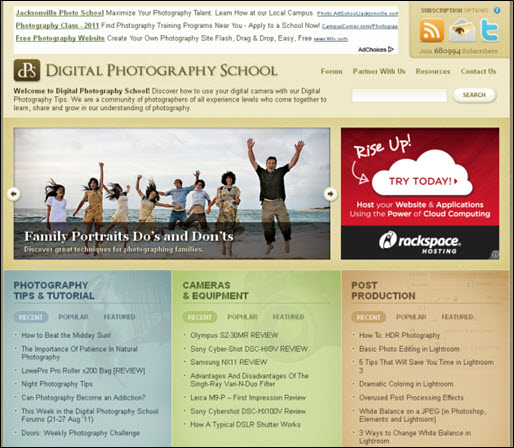Display advertising can be a great channel to target and even retarget customers on the Web. However, as banner blindness increases, marketers must be cognizant of more than when and where they’ll employ banner ads.
They also need to keep in mind the ad itself.
First, it’s important to remember the goal of a banner ad: to get a qualified click.
You’re not trying to make a sale, that’s the job of the landing page. The job of your ad is to get the visitor’s attention, grab their interest, and earn their click. These three objectives make up the MECLABS Online Ad Sequence:

Wherein:
ea = effectiveness of the ad
at = attract attention
i = generate interest
as = ask for the click
It’s in this heuristic’s three objectives marketers make three of the most common mistakes with banner ads …
Mistake #1. The ad doesn’t attract attention
As I mentioned earlier, the first objective your ad must fulfill is attracting attention. You can see that importance by the coefficient of 2 used with the “attract attention” variable. Attracting attention bears the most weight in the sequence because if visitors don’t notice your ad, then little else will matter.
There are five relative differentials you can use to help your ad stand out against other elements on a page:
1. Size – Don’t think of only the ad size, but also the size of any text, images, or other design elements used within the ad.
2. Shape – Again, you can play with the shape of the ad, but don’t forget the other elements. An image can be displayed in a circle, or text in a cloud-shaped graphic. Don’t be afraid to leave behind the right-angled shapes.
3. Color – You can be bold without being obnoxious. Use color to attract positive attention. While some ugly colors can gain attention, they can also affect how people interpret your message. Their distaste for a color can translate to you and your message.
4. Motion – Motion has been abused in banner ads, according to Flint McGlaughlin, Managing Director, MECLABS, in the Web Clinic, “Banner Ad Design: The 3 key banner objectives that drove a 285% lift.” Motion can certainly gain attention, but you must use it with care or you’ll increase friction with that increased attention. Make sure that text can be easily read and the call-to-action can be found at all times.
5. Position – If you can, you want to avoid the typical banner locations. Visitors learn to ignore content where ads are most likely found. Ideally, you want to position your ad in the visitor’s eye-path, where you know their concentration will be the highest.
Remember, less can be more. If you emphasize your  ad using all of these differentials, then you are essentially emphasizing nothing at all.
ad using all of these differentials, then you are essentially emphasizing nothing at all.
Check out this webpage. The ad really stands out for two reasons: shape and color. The cloud shape pulls your eye to it on page filled with rectangles. The vibrant red also grabs your attention, as the rest of the page uses much more muted colors. But while it is brighter than the rest of the page, the red is not unbearable.
Mistake #2. The ad lacks value
So you’ve gotten their attention, but why should your customers click? You build interest through value. Every action you ask a prospect to make must have a value proposition. This is what we refer to as a process-level value proposition. Think of it like this:
“Why should [Prospect A] click this banner ad rather than any other element on the page?”
In the “Banner Ad Design” Web clinic replay, Flint reviews four elements you can evaluate to measure the force of a value proposition:
- Appeal – How much do I desire this offer?
- Exclusivity – Where else can I get this offer?
- Credibility – Can I trust your claims?
- Clarity – What are you actually offering?
Using these elements, where do you fall on a scale one to five? Work with your team to evaluate your ad in each area. Looking at the average score of each element can help you determine which areas to focus on for improvement.
If you were to see this Traveling Dog ad, what would you take away from it? Virtually nothing. There’s no message, no value, no “ask.” While visitors will intuitively know it’s an ad, they will not know what it’s for. With no value proposition presented, the likelihood visitors will click is slim.
Mistake #3. The ad doesn’t ask for the click … the right click
Many marketers and designers become so wrapped up in the design of the ad, they overlook a critical piece: “the ask.”
You need to make sure you’re asking for the click, whether it’s implied or direct. Also, you must ensure visitors know what they’re getting in exchange for the click. Will they be able to learn more? Buy now? Download a 15-page report? Use your call-to-action to set visitors’ expectations.
This banner ad misses some opportunity. The small “click here” does nothing to help conversion. Why should I click? What will happen when I click? For example, “Shop Our Sale” could have been “the ask” to let visitors know what to expect after they click.
While technically the entire ad is clickable, it helps to establish the action of clicking if you use a button design in your ad.
But, it’s not about just any “ask.” You need to know where visitors are in your purchase cycle so you can “match ‘the ask’ to the motivation of the ideal visitor,” as Flint said in the “Banner Ad Design” Web clinic.
If customers are new to your company or product, they might still be in the research phase. That means an ad asking them to “buy now” could result in no click. However, an ad that asks them to “learn more” addresses the needs the visitor has concerning your product or service.
Mistake #4. The ad doesn’t show continuity with the landing page
It’s important to remember the ad is just one step in your conversion process. To have the most effective online advertising you can, you must ensure all of the pieces work well together.
To achieve continuity, each step in your conversion process must either state or support the value proposition. While your product value proposition may have three or four claims, you need to ensure the claim used in the banner ad is immediately presented on the landing page. You want to help visitors quickly and easily identify they are on the right page.
If your banner ad promises a free quote, carry that message through to the landing page and follow through with that value promised. If the landing page doesn’t continue the value and message in the banner ad, visitors will experience friction and anxiety, and you’ll be potentially missing out on a conversion.
Related Resources:
Banner Ad Design: The 3 key banner objectives that drove a 285% lift – Free Web clinic replay
Banner Blindness: Optimize your online display advertising to stick out (or blend in)
Display Advertising: 3 basic questions every marketer should ask themselves about banner ads






Hi Selena Blue,
Its really important for a person to know the “Call To Action” theory which will surely help all of you to get highest expected CTR. Also, I think picture should not have a white background as they are not much appealing.
Thank you for the nice article 😉
Keep sharing with us!
Selena, thanks a lo for sharing your tips with us readers!!
I think I am agreed to the mistake one i really didnt take care of the concepts which you have clearly mentioned in MISTAKE 1,
I really need to change and implement the size and shape factors thanks the post is really very helpful to me.
I think lacking value is one of the biggest ones. So many ads just concentrate on the design that they forget it has to connect with people on a basic need/want level.
Selena;
Thanks for the tips. You are right, you need to carry it through to the landing page. Call to action usually has the highest click through rate for us. It all comes down to a comprehensive strategy with landing page optimization and banner placement. Thanks again for a great article.
Teri Green
Atlas Biomechanics
Hey Selena, loved your points and I guess people miss out on the point of advertising when their landing pages arent in sync with their ads.
I used to follow this routine in the past and I have lost thousands of dollars in revenue because of this.
I’m sure this would be a wake up call for a lot of your readers. 🙂
You’ve made me realize how important it is for an ad to ask for a click and to establish the idea that the ads have a continuity with the landing pages.
Also, I think size and position are more important than anything, because those two points are what get the viewer’s attention…
Impressive article Selena!!! Now I understood more about the display of advertisements. Surely I must keep it in my mind. Thanks for the wonderful tips.
Well Said Selena!!! Call 2 Action definetly gets the maximum points, Designing and content are most important for viewers attention.
Hi Selena, you show us the crucial factor in advertising with banner. I found 300×250 pixel and people with smile works well with my ads.
Nice article, Selena!
Hi Selena,
Thanks for this great post. As of last month, I have actually removed nearly all banners from my site. I only now engage users in contextual adverts that are cleverly hidden within my articles.
I think the new generation of searchers really do have tunnel vision when it comes to banners.
Great Post. thanks for sharing information.
Valuable post. Good to know something new. Thanks for that.
Caitlyn
Great post, some excellent points.
I would also add that the placement (on which website) of the banner / display ad is also something to take into account, especially when using AdWords, as if you do not control the placements and remove some of the rubbish, you can end up with little ROI.
I like your point about how display ads with bold colors can attract positive attention. I know I tend to check out displays at stores that have a lot going on with them. I can see this being an effective way to direct customers to displays where special sales or offers are happening.